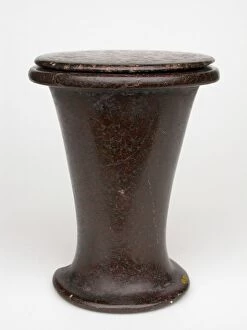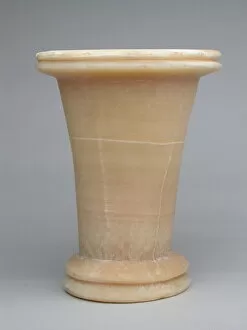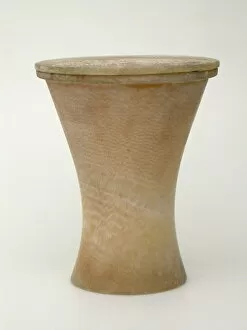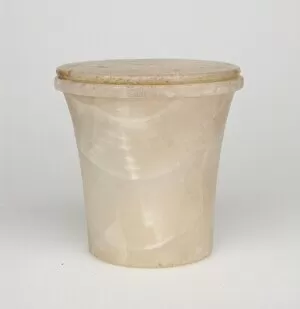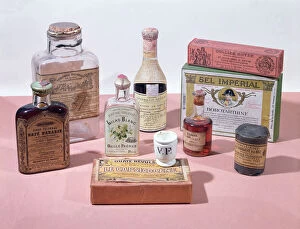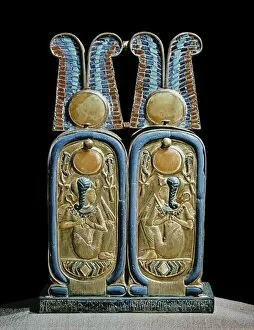Unguent Collection
"Unguent: A Journey Through Time and Culture" Step back in time and explore the fascinating world of unguent, a precious substance used for centuries
For sale as Licensed Images
Choose your image, Select your licence and Download the media
"Unguent: A Journey Through Time and Culture" Step back in time and explore the fascinating world of unguent, a precious substance used for centuries. From ancient Egypt to biblical times, this aromatic ointment has played a significant role in various civilizations. Imagine being transported to the scene of St. Mary Magdalene, Salome, and Mary Jacoby as they make their way to the tomb. They carry with them an unguent bottle with a pointed base, dating back to the 1st century. Who created it remains unknown but its craftsmanship speaks volumes about the skills of ancient artisans. Travel further into history and discover an exquisite unguent vessel from Egypt's Middle Kingdom-Early New Kingdom period (Dynasty 12-Early Dynasty 18). This masterpiece showcases the artistic prowess of its creator while offering insights into ancient Egyptian customs and rituals. Another remarkable find is an unguent jar from Egypt's Ptolemaic Period (332-30 BCE). Its mysterious origins add intrigue as we ponder who crafted such a delicate piece that once held precious scented oils or medicinal concoctions. Delve even deeper into antiquity with an unguent vessel from Egypt's Middle Kingdom (Dynasty 12), dating back approximately 1985-1773 BCE. The fact that this artifact has survived thousands of years is awe-inspiring, reminding us of our connection to those who came before us. The journey continues with an intriguing discovery—an unguent vessel from Egypt's Old Kingdom-Middle Kingdom period (Dynasty 3-12), spanning around 2686-1773 BCE. As we marvel at its design and purpose, we can't help but wonder about the lives of those who used it so long ago. Fast forward through time to Late 18th Dynasty Egypt (c. 1336-1295 BC) where we encounter a unique glass unguent bottle, known as a Krateriskos.


